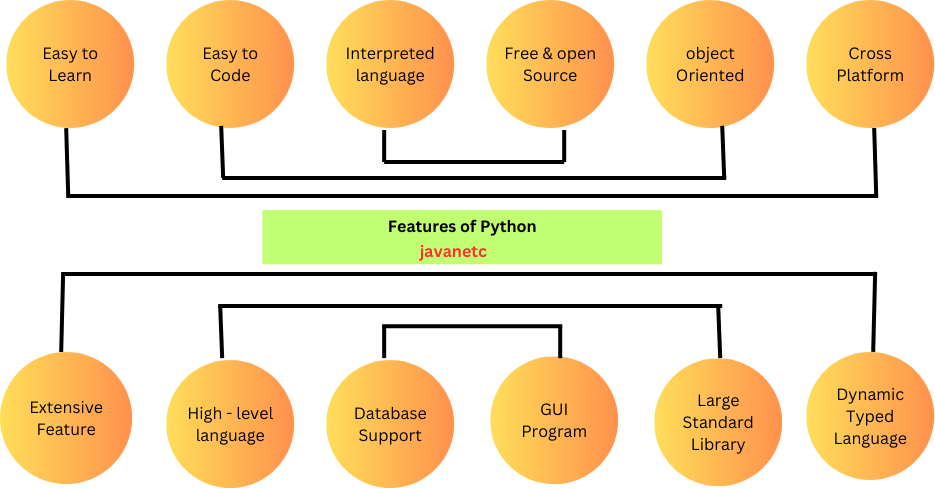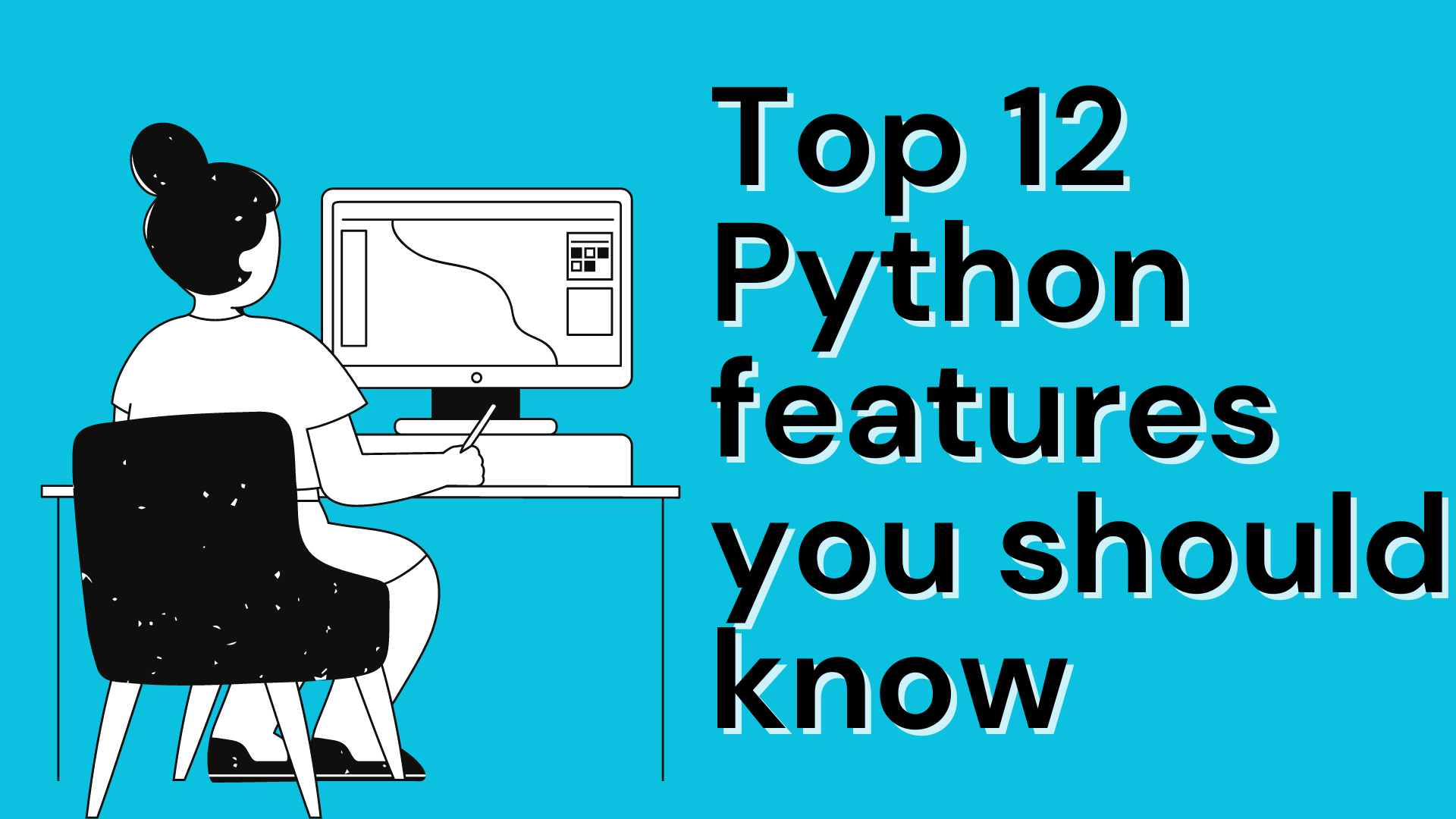Overview
Python is a widely-used, object-oriented, dynamic, high-level, open-source, and interpreted programming language. Renowned for its simplicity, readability, and versatility, Python has garnered immense popularity among both beginners and professionals. Its robust community support has led to a vast collection of built-in modules and libraries for diverse applications.
Introduction to Top 12 Python features
Top Features of Python, created by Guido Van Rossum in February 1991, is a general-purpose programming language. It prioritizes code readability through significant indentation, making it highly accessible for learners. Python’s versatility extends to various domains, including software development, web and mobile app development, embedded systems, and more. With its latest version, Python 3.9.0, featuring numerous enhancements, Python continues to evolve as a powerful programming language.
Table of Top Features of Python
Top Features of Python

Features of Python
1. Easy to Learn:
Python offers a gentle learning curve, allowing users to grasp its basics quickly. Its simple syntax, resembling English, enables beginners to write basic programs within days. Compared to languages like C, C++, and Java, Python stands out as the easiest to learn and master.
2. Easy to Code:
Python’s syntax is intuitive and straightforward, resembling natural language constructs. The absence of bracket-based scope delimiters simplifies code structure, relying instead on indentation for readability and clarity.
3. Interpreted Language:
Python operates as an interpreted language, executing code line by line rather than compiling it into an executable beforehand. This line-by-line execution facilitates easy debugging and enhances development agility.
4. Free and Open Source:
Python is freely available and open-source, eliminating licensing costs and copyright restrictions. Its accessibility enables developers to utilize it across different operating systems without limitations.
5. Object-oriented language:
Python supports object-oriented programming (OOP), which emphasizes classes and objects for code organization and reuse. With features such as data encapsulation, inheritance, and polymorphism, Python facilitates efficient and modular application development.
6. Cross-Platform Language:
Python’s cross-platform compatibility allows code written on one operating system to run seamlessly on others without modification. By converting code into bytecode, Python ensures portability across diverse environments.
7. Extensive Features:
Python’s extensibility enables integration with other languages like C/C++, expanding its capabilities and functionality. This flexibility broadens Python’s applicability in various software development domains.
8. High-Level Language:
Python’s high-level nature abstracts low-level system details, allowing developers to focus on logic and functionality. This abstraction enhances code readability and portability across different hardware architectures.
9. Database Support:
Python’s Database API (DB-API) facilitates seamless interaction with major relational and non-relational databases like MySQL, PostgreSQL, and Oracle. This support streamlines database operations in Python applications.
10. GUI Programming Support:
Python offers numerous GUI libraries like Tkinter and PyQT5, enabling the development of visually appealing and interactive applications. GUI programming enhances user experience and simplifies interaction with Python-based software.
11. Large Standard Library:
Python boasts a comprehensive standard library comprising cross-platform modules and functions for diverse tasks. This rich library ecosystem minimizes the need for writing code from scratch, promoting rapid application development.
12. Dynamic Typed Language:
Python’s dynamic typing eliminates the need for explicit variable type declarations, enhancing development flexibility and productivity. This feature, coupled with Python’s memory management, simplifies code writing and maintenance.
Conclusion of Top Features of Python
Python’s remarkable features, including simplicity, versatility, and extensive library support, have cemented its position as a leading programming language. Its suitability for various programming paradigms, robust community support, and active development ensure its relevance and utility across industries. As Python continues to evolve, it remains an invaluable tool for developers, data scientists, and enthusiasts alike.



